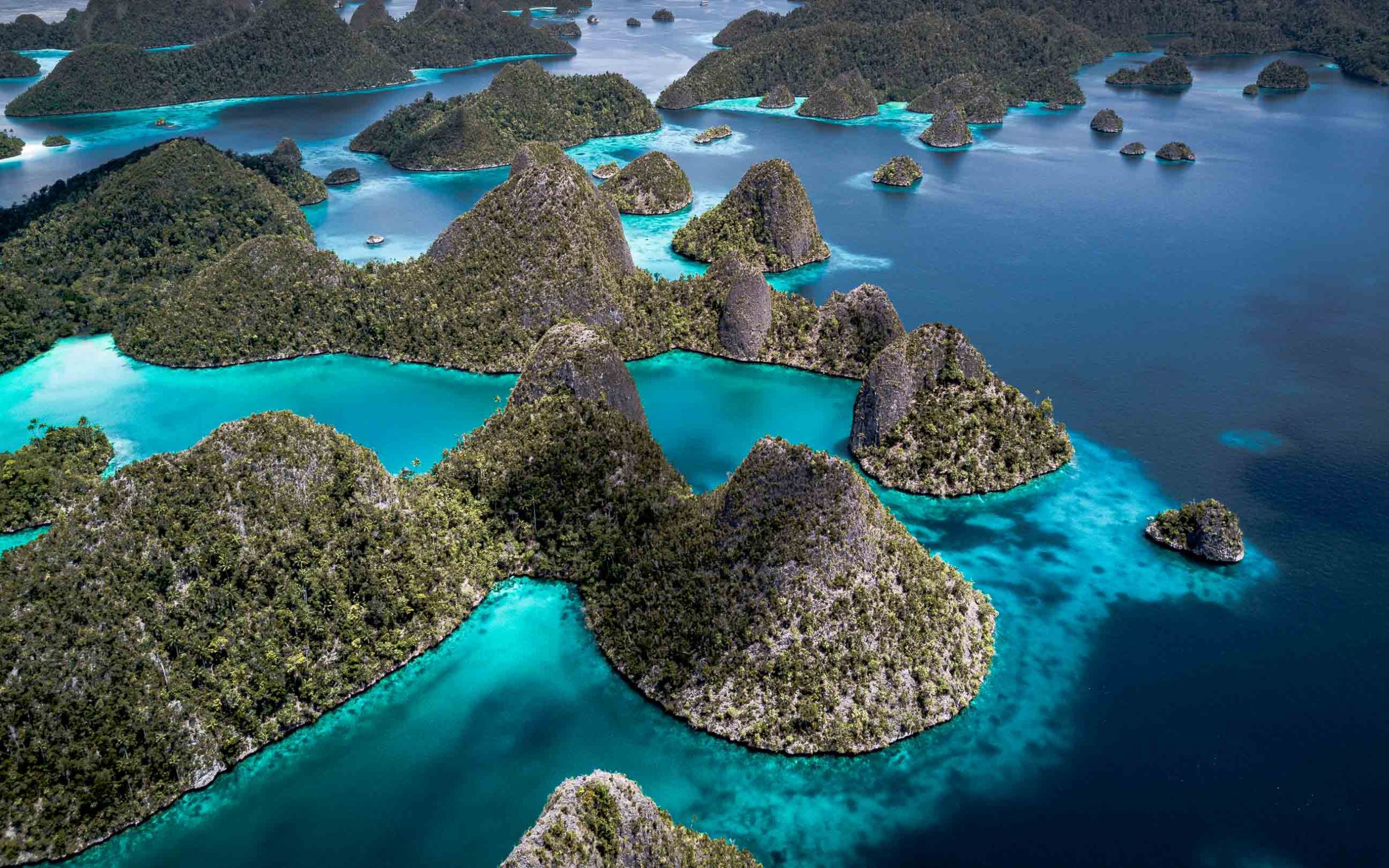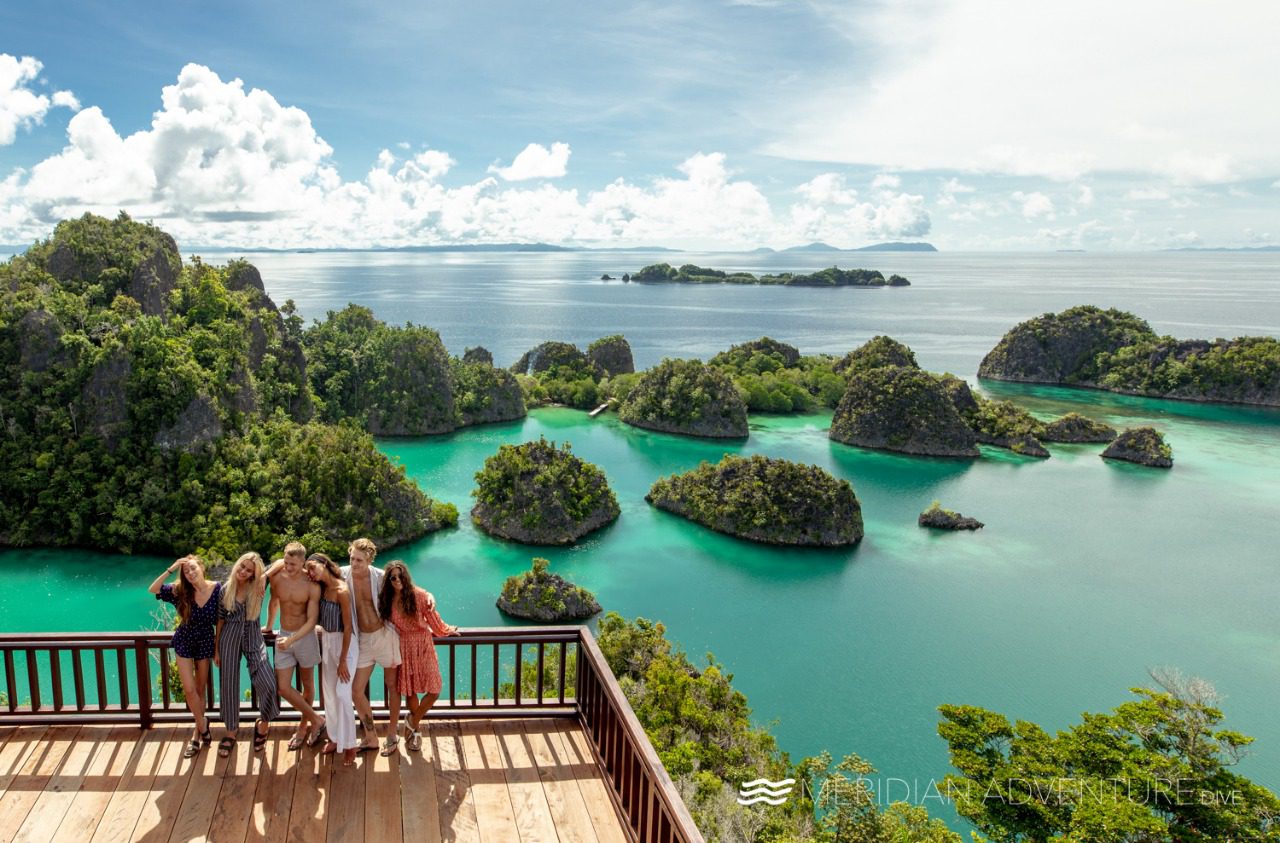
Raja Ampat, an archipelago off the northwest tip of West Papua, Indonesia, is a name synonymous with unparalleled natural beauty, vibrant marine biodiversity, and a sense of pristine wilderness. Often referred to as the "Last Paradise" or the "Amazon of the Seas," this collection of over 1,500 islands, islets, and shoals offers an unforgettable experience for divers, snorkelers, nature lovers, and anyone seeking an escape from the ordinary. But Raja Ampat is more than just stunning scenery; it’s a place steeped in history, culture, and a unique ecological balance. Let’s dive deep into the facts about Raja Ampat, exploring its rich tapestry of wonders.
A Glimpse into History:
Raja Ampat’s history is intertwined with the spice trade and the influence of various kingdoms. The name itself, meaning "Four Kings" in Indonesian, refers to the four major islands – Waigeo, Misool, Salawati, and Batanta – each traditionally ruled by a king. These kingdoms held considerable power, primarily due to their control over the spice routes that passed through the region.
Related Articles about Raja Ampat Islands: A Deep Dive into Paradise:
- The Roar of Nature: Your Ultimate Guide to Experiencing Iguazu Falls
- Geneva: A Jewel on the Lake – Your Comprehensive Guide
- Riyadh: Where Ancient Sands Meet Modern Marvels – A Guide to its Top Hotels and Beyond
- Switzerland: The Ultimate Travel Guide to Alpine Majesty and Urban Charm
- The Sands of Time and the Towers of Tomorrow: A Journey Through the Best Tourist Attractions in the United Arab Emirates
Historically, Raja Ampat was under the influence of the Sultanate of Tidore, a powerful spice-trading kingdom based in the nearby Moluccas Islands. The sultans exerted their authority through tributes and alliances with the local kings. Dutch colonial influence began in the 17th century, gradually eroding the power of Tidore and establishing a Dutch presence in the region.
While Dutch control was present, the remote nature of Raja Ampat allowed indigenous cultures and traditions to thrive. The local communities, primarily Papuan, maintained their distinct languages, customs, and social structures. These traditions are still visible today, enriching the cultural landscape of the islands.
Following Indonesia’s independence in 1945, Raja Ampat became part of the newly formed nation. However, its remote location and limited infrastructure meant that development was slow, preserving its natural beauty and unique ecosystems. In recent decades, with increased awareness of its biodiversity and tourism potential, Raja Ampat has experienced a surge in interest, leading to conservation efforts and sustainable tourism initiatives.
Main Attractions: A Symphony of Nature’s Masterpieces:
Raja Ampat’s main draw is undoubtedly its unparalleled marine biodiversity. The Coral Triangle, a region encompassing parts of Indonesia, Malaysia, the Philippines, Papua New Guinea, and the Solomon Islands, boasts the highest concentration of marine species on Earth, and Raja Ampat sits at its very heart.
-
Diving and Snorkeling: With over 1,400 species of fish and 75% of the world’s known coral species, Raja Ampat is a diver’s and snorkeler’s paradise. The underwater landscapes are breathtaking, featuring vibrant coral reefs, dramatic walls, and an abundance of marine life, from tiny pygmy seahorses to majestic manta rays and reef sharks. Popular dive sites include:
- Cape Kri: Known for its incredible fish biomass, often touted as the site with the highest fish count recorded in a single dive.
- The Passage: A narrow channel between Waigeo and Gam Island, teeming with life and offering unique diving conditions.
- Misool: Renowned for its soft corals, sea fans, and diverse fish populations.
- Pianemo: Famous for its stunning panorama of karst islands and surrounding reefs, accessible by a short boat ride and climb.
-
Island Hopping: Exploring the diverse islands is a must. Each island offers unique landscapes, from pristine beaches and lush rainforests to towering limestone cliffs and hidden lagoons. Some highlights include:
- Wayag: Arguably the most iconic image of Raja Ampat, featuring dramatic karst formations rising from turquoise waters.
- Gam Island: Known for its birdwatching opportunities, including the iconic Red Bird-of-Paradise.
- Arborek: A charming village island with a vibrant community and excellent snorkeling opportunities.
-
Birdwatching: Raja Ampat is a haven for birdwatchers, with a variety of endemic and migratory species. The Red Bird-of-Paradise and Wilson’s Bird-of-Paradise are two of the most sought-after sightings.
-
Hiking and Trekking: Several islands offer opportunities for hiking and trekking through lush rainforests, leading to panoramic viewpoints and encounters with unique flora and fauna.
-
Kayaking and Paddleboarding: Exploring the calm waters of the lagoons and mangrove forests by kayak or paddleboard is a peaceful and rewarding experience.
Travel Tips for a Smooth Journey:
Planning a trip to Raja Ampat requires careful consideration due to its remote location and limited infrastructure. Here are some essential travel tips:
- Permit: A Raja Ampat Marine Park Entry Ticket (PIN) is required for all visitors. This contributes to conservation efforts and can be purchased online or upon arrival at Sorong Airport.
- Currency: Indonesian Rupiah (IDR) is the local currency. ATMs are limited, so it’s advisable to bring enough cash. Credit cards are not widely accepted.
- Language: Bahasa Indonesia is the official language. English is spoken in some tourist areas, but learning a few basic Indonesian phrases will be helpful.
- Health: Consult your doctor about necessary vaccinations and malaria prophylaxis. Pack insect repellent, sunscreen, and a first-aid kit.
- Packing: Pack light clothing, swimwear, comfortable walking shoes, reef-safe sunscreen, a hat, sunglasses, and a waterproof bag for electronics.
- Respect the Environment: Practice responsible tourism by avoiding single-use plastics, respecting local customs, and refraining from touching or disturbing marine life.
- Internet Connectivity: Internet access is limited and often unreliable. Consider purchasing a local SIM card for better connectivity in some areas.
- Pre-booking: Book accommodations, tours, and transportation in advance, especially during peak season.
- Travel Insurance: Ensure you have comprehensive travel insurance that covers medical emergencies, evacuation, and trip cancellations.
Best Time to Visit: Chasing the Perfect Weather Window:
The best time to visit Raja Ampat is generally between October and April, during the dry season. The seas are calmer, visibility is excellent for diving and snorkeling, and rainfall is minimal. The shoulder months of September and May can also be good options, offering a balance of favorable weather and fewer crowds.
The months of June to August are considered the wet season, with increased rainfall and potentially rougher seas. While diving is still possible, visibility may be reduced, and some boat trips may be affected by the weather.
Nearby Hotels: From Rustic Charm to Luxurious Retreats:
Accommodation options in Raja Ampat range from simple homestays to luxurious resorts. Here are some popular choices:
- Homestays: Offer a budget-friendly and authentic experience, allowing you to stay with local families and immerse yourself in the culture. These are often located on smaller islands like Arborek and Sauwandarek.
- Resorts: Provide a higher level of comfort and amenities, with options ranging from eco-lodges to luxury resorts. Popular resorts include:
- Misool Eco Resort: Located in Misool, renowned for its commitment to sustainability and conservation.
- Papua Paradise Eco Resort: Offers overwater bungalows and excellent diving opportunities.
- Raja Ampat Biodiversity Eco Resort: Situated on Kri Island, known for its proximity to some of the best dive sites.
- Meridian Adventure Marina Club & Resort Waisai: Offers modern amenities and a convenient location in Waisai, the capital of Raja Ampat.
Local Food: A Taste of Papuan Flavors:
Raja Ampat’s cuisine is influenced by its coastal location and the availability of fresh seafood. Some local dishes to try include:
- Ikan Bakar: Grilled fish, often marinated in local spices.
- Papeda: A starchy porridge made from sago, a staple food in Papua.
- Sayur Ganemo: A vegetable stew made with melinjo leaves, corn, and pumpkin.
- Sate Ulat Sagu: Sago worm skewers, a local delicacy (for the adventurous!).
- Fresh Seafood: Enjoy a variety of fresh seafood, including lobster, prawns, and crabs, prepared in various ways.
Transportation Options: Navigating the Archipelago:
Getting around Raja Ampat requires careful planning due to its dispersed islands and limited infrastructure.
- Flights: The main gateway to Raja Ampat is Sorong (SOQ) Airport, with flights from major Indonesian cities like Jakarta, Makassar, and Manado.
- Ferries: Public ferries connect Sorong to Waisai, the capital of Raja Ampat, and some of the larger islands.
- Speedboats: Speedboats are the most common mode of transportation between islands, offering faster and more flexible travel options. These can be arranged through resorts or local tour operators.
- Chartered Boats: For larger groups or those seeking more flexibility, chartering a boat is an option.
Conclusion: An Unforgettable Journey Awaits
Raja Ampat is more than just a destination; it’s an experience that will stay with you long after you leave. From its breathtaking underwater landscapes and pristine beaches to its rich cultural heritage and commitment to conservation, Raja Ampat offers a unique and unforgettable journey for those seeking adventure, natural beauty, and a connection with the wild. Plan your trip carefully, embrace the adventure, and prepare to be captivated by the magic of this truly extraordinary archipelago.








